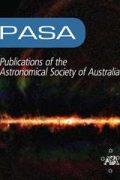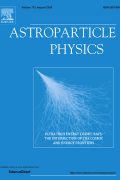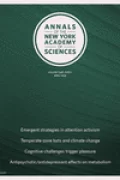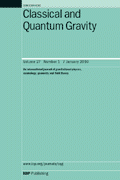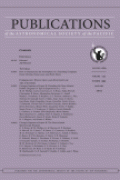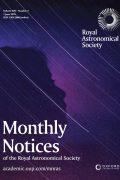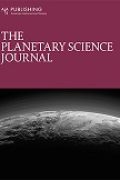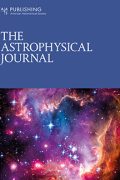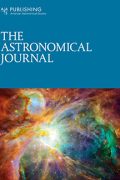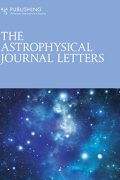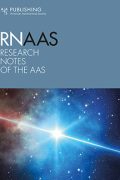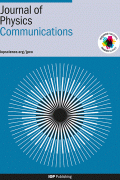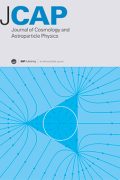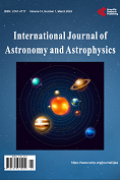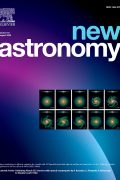OpenAlex Research Search
Keywords
Author
Loading...
Astrophysics is a science that employs the methods and principles of physics and chemistry in the study of astronomical objects and phenomena. As one of the founders of the discipline, James Keeler, said, astrophysics "seeks to ascertain the nature of the heavenly bodies, rather than their positions or motions in space–what they are, rather than where they are... Wikipedia
Conferences
-
8th International Conference on Astronomy, Astrophysics and Space Science June 19-20, 2025 Budapest, Hungary

-
Separation Techniques & Formulation April 22-23, 2025 Paris, France

-
16th International Conference on Exhibition on Lasers, Optics & Photonics October 27-28, 2025 Paris, France

-
10th International Conference on Quantum Physics and Mechanics October 27-28, 2025 Paris, France

-
9th International Meeting on Fluid Dynamics & Fluid Mechanics December 01-02, 2025 Vancouver, Canada

Books
E-Books
Use the below Call Number/s to browse books on shelves available on first floor of library:
- 523.01, 523.8,
You can access books via Library Catalogue and check availability.
List of some Books available in library is given below:
- 523.01, 523.8,
You can access books via Library Catalogue and check availability.
List of some Books available in library is given below:
The HDFC Library provides access to wide range of eBooks to support your research journey.
Use this E-Book guide to know how to access eBooks
The ProQuest eBooks central is major database having Neuroscience eBooks. List of some eBooks is given below:
(Note: To access books the below given books you must be logged in to eLibrary portal)
Use this E-Book guide to know how to access eBooks
The ProQuest eBooks central is major database having Neuroscience eBooks. List of some eBooks is given below:
(Note: To access books the below given books you must be logged in to eLibrary portal)
Journals
Referred Articles
| Article | DOI |
|---|---|
| Microstructure and the Pulsar Emission Mechanism | Link |
| Radio Observational Constraints on Pulsar Emission Mechanisms | Link |
| Radius-to-Frequency Mapping in the Radio Pulsar Emission Mechanism | Link |
| Crab Pulsar: Enhanced Optical Emission During Giant Radio Pulses | Link |
| Radio spectra of millisecond pulsars | Link |
| Modelling the expected very high energy γ-ray emission from accreting neutron stars in X-ray binaries | Link |
| Strange brew | Link |
| Neutron Star Cooling and the Vela Pulsar | Link |
| The Current Status of Neutron Star Cooling Theories | Link |
| Magnetic Field Effects upon Neutron Star Cooling | Link |
| Gravitational Waves from Coalescing Neutron Stars | Link |
| Origin of the heavy elements in binary neutron-star mergers from a gravitational-wave event | Link |
| Wideband polarization and spectral properties of 18 high Galactic latitude pulsars | Link |
| Neutron Stars in the Light of Square Kilometre Array: Data, Statistics and Science | Link |
| A lot of the periodic table is a result of neutron stars colliding | Link |
| The dizziest, giddiest stars | Link |
| Formation and Evolution of Ultraluminous X-Ray Pulsar Binaries to Pulsar–Neutron Star and Pulsar–White Dwarf Systems | Link |
| Pulsar Demography and Neutron Star Astrophysics | Link |
| Elastic and breaking properties of epitaxial face-centered crystals in neutron star crusts and white dwarf cores | Link |
| Liquid-phase epitaxy of neutron star crusts and white dwarf cores | Link |
| Study of Magnetic Field and Turbulence in the TeV Halo around the Monogem Pulsar | Link |
| Reciprocating Magnetic Fields in the Pulsar Wind Observed from the Black Widow Pulsar J1720-0534 | Link |
| A Spatially Resolved X-Ray Polarization Map of the Vela Pulsar Wind Nebula | Link |
| Pulsar-based Galactic Magnetic Map: A Large-Scale Clockwise Magnetic Field with an Anticlockwise Annulus | Link |
| An XMM-Newton Observation of the High Magnetic Field Radio Pulsar PSR B0154+61 | Link |
| Chandra X-Ray Detection of the High Magnetic Field Radio Pulsar PSR J1718–3718 | Link |
| Pulsar radio emission mechanism: Why no consensus? | Link |
| Toward an Empirical Theory of Pulsar Emission. XII. Exploring the Physical Conditions in Millisecond Pulsar Emission Regions | Link |
Recent Trends
Neutron Stars and Quark Stars Inside Out, Gamma Ray, Neutron Star Birth from Supernovae, Interstellar Turbulence, Merger of Neutron Stars
Magnetic Fields in the ISM,
Non-Ideal Magnetohydrodynamic (MHD) Effects, Gravitational Waves and Neutron Star Mergers, Gamma-Ray Burst
Neutron Star Structure and Composition, Astrophysical Observations and Models, Neutron Star Environments and Progenitors
Internet/Blogs
| Title | Access |
|---|---|
| Deep learning prediction of galaxy stellar populations in the low-redshift Universe | Link |
| Chandra Peers Into Densest and Weirdest Stars | Link |
| X-raying the Magnetic Field Bones of the Cosmic Hand | Link |
| A Magnetar-powered X-ray Transient as the Aftermath of a Binary Neutron-star Merger | Link |
| A New Signal for a Neutron Star Collision Discovered | Link |
| What are pulsars? | Link |
| Pulsars and Their Glitches: A Glimpse into Neutron Star Secrets | Link |
| This Extraordinary Celestial Structure Is The Product Of A Double Supernova | Link |
| A newly hatched neutron star | Link |
| ASKAP searches for afterglow of gravitational wave | Link |
| A chance encounter with a pulsar | Link |
| Global collaboration is making waves in space | Link |
| Fifty years ago Jocelyn Bell discovered pulsars and changed our view of the universe | Link |
| Pulsar pays a flying visit | Link |
| We counted 20 billion ticks of an extreme galactic clock to give Einstein’s theory of gravity its toughest test yet | Link |
| Where are the missing gravitational waves? | Link |
| Freaky pulsar flaunts its tail | Link |
| neutron stars | Link |
| THE COSMIC GIFT OF NEUTRON STARS: A LIVE-BLOG EVENT | Link |
| The First Gravity Wave and Telescopic Neutron Star Merger | Link |

